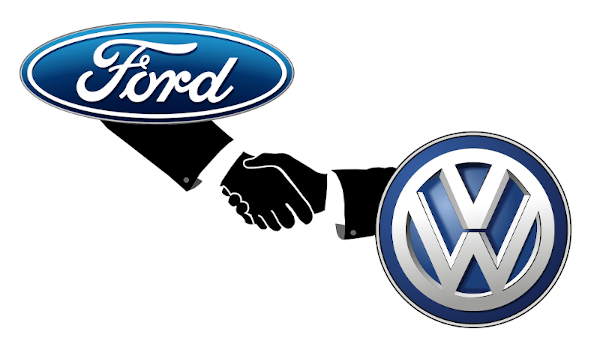
Charles R. Goulding and Ryan Donley discuss a new automotive co-production agreement and the potential applications there for 3D printing.
When Ford, the world’s largest truck producer, and Volkswagen, the world’s largest car manufacturer, announce a major co-production agreement, it is time to take notice. It is particularly important for the 3D printing industry to take notice since both companies have deep 3D printing expertise.
The new alliance encompasses 8 million commercial vehicles including, pickups, transit vehicles, and electric vehicles. This includes Ford’s Ranger and Transit brands and Volkswagen’s Transporter and Caddy Vans and the Amarak pickup. Until recently the pickup market was primarily limited to Ford, Chevy Silverado, Dodge Ram, and the Nissan Titan. New entrants gaining attention are Rivian, Tesla, Jeep Rubican, and the Nikola Badger Pickup.
Ford uses many leading brands of 3D printers including Carbon, Desktop Metal, Stratasys, and Siemens. Volkswagen uses HP Inc. and Additive Industries printers and has an Advanced 3D Printing center in Wolfsburg, Germany.
Examples of just a few of 3D printing accomplishments from each company follow:
Ford
Ford’s large-scale 3D printing portfolio includes truck parts, such as auxiliary plugs for the Ford F-150 and the largest metal automotive part for a working vehicle to be used in their extensive truck line. Also included in their 3D printing accomplishments are electric parking brake brackets for the upcoming Mustang GT500 which in itself will feature more of Ford’s extensive 3D printed parts.
Volkswagen
Volkswagen achieved a major feat in the 3D printing verse as they unveiled the ID.3, an electric vehicle that will be mass-produced with 3D printed parts. In addition to the ID.3, Volkswagen is 3D printing individualized design components like tailgate letterings, keys, gearshift knobs, and more with an eventual plan to print up to 100,000 parts a year in their early multi-phase 3D printing plans. They have partnered with several major 3D printing companies, including HP, to use the technology in their production processes.
The Research and Development Tax Credit
Enacted in 1981, the now permanent Federal Research and Development (R&D) Tax Credit allows a credit that typically ranges from 4%-7% of eligible spending for new and improved products and processes. Qualified research must meet the following four criteria:
- Must be technological in nature
- Must be a component of the taxpayer’s business
- Must represent R&D in the experimental sense and generally includes all such costs related to the development or improvement of a product or process
- Must eliminate uncertainty through a process of experimentation that considers one or more alternatives
Eligible costs include US employee wages, cost of supplies consumed in the R&D process, cost of pre-production testing, US contract research expenses, and certain costs associated with developing a patent.
On December 18, 2015, President Obama signed the PATH Act, making the R&D Tax Credit permanent. Beginning in 2016, the R&D credit can be used to offset Alternative Minimum tax for companies with revenue below $50MM and, startup businesses can obtain up to $250,000 per year in payroll tax cash rebates.
Conclusion
This alliance brings together two world-class manufacturers with substantial 3D printing expertise. The end result should be a best of breed 3D printed vehicle champion.
